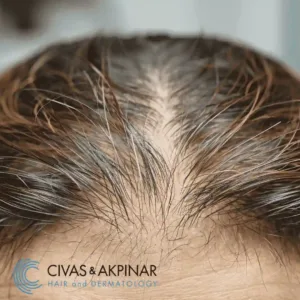Naisten hiustensiirto Menettelyn ymmärtäminen
Naisten hiustensiirto: Toimenpiteen ja sen hyötyjen ymmärtäminen
Naisten hiustenlähtö on yleinen huolenaihe, joka voi merkittävästi vaikuttaa itsetuntoon ja itseluottamukseen. Onneksi lääketieteellisen teknologian edistys on tehnyt hiustensiirtotoimenpiteistä toteuttamiskelpoisen ratkaisun naisille, jotka kokevat hiusten ohenemista tai kaljuuntumista. Tässä informatiivisessa artikkelissa tutkimme naisten hiustensiirtoleikkauksen eri näkökohtia, hiustenlähdön taustalla olevien syiden ymmärtämisestä toimenpiteeseen liittyvien hyötyjen ja huomioitavien asioiden tutkimiseen.
Naisten hiustenlähtö: Syyt ja mallit
Naisten hiustenlähtö voidaan johtaa useisiin tekijöihin, mukaan lukien genetiikka, hormonaaliset muutokset, sairaudet ja elämäntapatekijät. Vaikka miesten kaljuuntuminen on hyvin tunnettua, naisten hiustenlähtö ilmenee usein eri tavalla, jolloin ohenemista tapahtuu kruunun alueella tai jakausviivan levenemistä. Tiettyjen syiden ja hiustenlähtömallien ymmärtäminen on ratkaisevan tärkeää sopivimman hoitotavan määrittämiseksi.
-
Genetiikka: Sukuhistorialla on merkittävä rooli naisen alttiuden määrittämisessä hiustenlähtöön. Naiset, joilla on suvussa naisten kaljuuntumista, kokevat todennäköisemmin samanlaisia hiustenlähtömalleja. Tiettyjen geneettisten tekijöiden periminen voi vaikuttaa hiusfollikkelien herkkyyteen hormoneille ja edistää hiusten ohenemista ja kaljuuntumista.
-
Hormonaaliset muutokset: Hormonaaliset vaihtelut, erityisesti raskaus, synnytys, vaihdevuodet ja hormonaaliset epätasapainot, voivat laukaista hiustenlähtöä naisilla. Raskauden aikana kohonneet estrogeenitasot voivat pidentää hiusten kasvuvaihetta, mikä johtaa paksumpiin ja täyteläisempiin hiuksiin. Synnytyksen jälkeiset hormonaaliset muutokset voivat kuitenkin johtaa liialliseen irtoamiseen ja väliaikaiseen hiustenlähtöön, joka tunnetaan nimellä telogen effluvium. Samoin kilpirauhashormonien vaihtelut voivat häiritä hiusten kasvukiertoa ja edistää hiusten ohenemista ja menetystä.
-
Sairaudet: Useat sairaudet voivat edistää hiustenlähtöä naisilla. Tiloja, kuten munasarjojen monirakkulaoireyhtymä (PCOS), kilpirauhassairaudet (hypotyreoosi tai hypertyreoosi), autoimmuunisairaudet (kuten lupus tai alopecia areata) ja päänahan sairaudet (kuten seborrooinen dermatiitti tai psoriasis), voivat kaikki vaikuttaa hiusfollikkelien terveyteen ja johtaa hiustenlähtöön. Lisäksi taustalla olevat terveysongelmat, kuten ravintoainepuutokset, anemia ja krooniset sairaudet, voivat myös ilmetä hiusten ohenemisena ja irtoamisena.
-
Elämäntapatekijät: Tietyt elämäntapatekijät voivat pahentaa hiustenlähtöä naisilla. Huono ravitsemus, pikadieetit ja välttämättömien ravintoaineiden (kuten raudan, proteiinin, vitamiinien ja kivennäisaineiden) riittämätön saanti voivat heikentää hiusten terveyttä ja johtaa hiustenlähtöön. Liiallinen lämpökäsittely, kemialliset käsittelyt ja tiukat hiustyylit, jotka vetävät hiusfollikkeleita, voivat aiheuttaa fyysisiä vaurioita ja edistää hiusten katkeilua ja ohenemista. Lisäksi korkea stressi, ahdistus ja emotionaalinen ahdistus voivat häiritä hiusten kasvukiertoa ja pahentaa hiustenlähtöä.
Naisten hiustenlähtö on monimutkainen ja monitekijäinen tila, johon vaikuttavat genetiikka, hormonaaliset muutokset, sairaudet ja elämäntapatekijät. Ymmärtämällä hiustenlähdön erityiset syyt ja mallit naiset voivat ryhtyä ennakoiviin toimiin taustalla olevien ongelmien ratkaisemiseksi ja asianmukaisten hoitostrategioiden toteuttamiseksi. Konsultointi pätevän terveydenhuollon ammattilaisen tai hiusten palauttamisen asiantuntijan kanssa voi auttaa naisia tunnistamaan hiustenlähtönsä perimmäisen syyn ja kehittämään yksilöllisiä hoitosuunnitelmia, jotka on räätälöity heidän yksilöllisiin tarpeisiinsa ja tavoitteisiinsa.
Hiustensiirtovaihtoehdot naisille
Hiustensiirtoleikkaus on noussut lupaavaksi ratkaisuksi hiustenlähtöä kokeville naisille, tarjoten pysyvän tavan palauttaa tiheys ja itseluottamus. Naisille tehtävissä hiustensiirroissa käytettäviä ensisijaisia tekniikoita ovat follikulaarisen yksikön poisto (FUE), follikulaarisen yksikön siirto (FUT) ja suora hiusten istutus (DHI), joilla jokaisella on omat ainutlaatuiset hyötynsä ja huomioitavat asiansa.
Follikulaarisen yksikön poisto (FUE) sisältää yksittäisten follikulaaristen yksiköiden poistamisen luovuttaja-alueelta, joka sijaitsee tyypillisesti päänahan takaosassa tai sivuilla. Nämä follikulaariset yksiköt siirretään sitten huolellisesti vastaanottaja-alueelle, jossa hiustenlähtö on yleisintä. FUE on tunnettu minimaalisesti invasiivisesta luonteestaan, koska se ei vaadi päänahan kudosnauhan poistamista, mikä johtaa vähempään arpeutumiseen ja nopeampaan toipumisaikaan. Tämä tekniikka sopii erityisen hyvin naisille, jotka haluavat pitää hiuksensa lyhyinä tai osallistua toimintaan, joka voi paljastaa heidän päänahkansa.
Toisaalta follikulaarisen yksikön siirto (FUT) sisältää ohuen päänahan nauhan poistamisen luovuttaja-alueelta, joka sitten leikataan yksittäisiksi follikulaarisiksi yksiköiksi siirtoa varten. Vaikka FUT voi johtaa lineaariseen arpeen luovuttajakohdassa, kirurgisten tekniikoiden edistys on minimoinut arpeutumisen, mikä tekee siitä vähemmän huomiota herättävän. FUT:ia suositellaan usein naisille, jotka tarvitsevat suuremman määrän siirteitä tai joilla on erityisiä hiusominaisuuksia, jotka tekevät heistä parempia ehdokkaita tälle lähestymistavalle.
Suora hiusten istutus (DHI) on toinen innovatiivinen tekniikka, joka sisältää hiusfollikkelien poistamisen ja istuttamisen käyttämällä erikoistyökaluja, jotka mahdollistavat tarkan ja tehokkaan siirron. Toisin kuin perinteinen FUE, DHI sisältää follikulaaristen yksiköiden samanaikaisen poistamisen ja istuttamisen, mikä lyhentää aikaa, jonka ne altistuvat ulkoisille tekijöille, ja lisää niiden selviytymismahdollisuuksia. Tämä menetelmä on ihanteellinen naisille, jotka etsivät vähemmän invasiivista toimenpidettä, jolla on minimaalinen palautumisaika ja nopeampi paraneminen.
Alkukonsultoinnin aikana pätevän hiustensiirtokirurgin kanssa hiustensiirtoleikkausta harkitsevat naiset käyvät läpi kattavan arvioinnin soveltuvuutensa arvioimiseksi. Tekijät, kuten hiustenlähdön laajuus, hiusten rakenne, päänahan joustavuus ja yleinen terveys otetaan huomioon sopivimman tekniikan määrittämiseksi. Lisäksi kirurgi keskustelee potilaan esteettisistä tavoitteista ja käsittelee kaikki huolenaiheet tai kysymykset, joita heillä voi olla toimenpiteestä.
Naisten on olennaista lähestyä hiustensiirtoleikkausta realistisin odotuksin ja perusteellisesti ymmärtäen prosessin. Vaikka hiustensiirtoleikkaus voi tuottaa merkittäviä tuloksia, se ei ole kaikille sopiva ratkaisu, ja tulokset voivat vaihdella yksilöllisten tekijöiden mukaan. Tekemällä tiivistä yhteistyötä ammattitaitoisen ja kokeneen hiustensiirtokirurgin kanssa naiset voivat tehdä tietoon perustuvia päätöksiä hoitomatkastaan ja lähteä matkalle kohti palautettua itseluottamusta ja elinvoimaa.
Tässä on antamasi artikkelin suomenkielinen käännös, kielioppi- ja oikeinkirjoitussääntöjen mukaisesti:
Hiustensiirtoleikkauksen hyödyt naisille
Hiustensiirtoleikkaus tarjoaa useita etuja naisille, mikä tekee siitä houkuttelevan vaihtoehdon hiustenlähtöä kokeville. Tässä on joitakin keskeisiä etuja:
-
Luonnollisen näköiset tulokset: Yksi merkittävimmistä hiustensiirtoleikkauksen eduista naisille on kyky saavuttaa luonnollisen näköisiä tuloksia. Taitavat kirurgit siirtävät huolellisesti yksittäisiä hiusfollikkeleita jäljittelemään hiusten luonnollista kasvumallia, varmistaen saumattoman ja huomaamattoman lopputuloksen.
-
Pysyvä hiusten palautus: Toisin kuin väliaikaiset ratkaisut, kuten peruukit tai hiuslisäkkeet, hiustensiirtoleikkaus tarjoaa pysyvän ratkaisun hiustenlähtöön. Siirretyt hiusfollikkelit kerätään tyypillisesti päänahan alueilta, jotka ovat vastustuskykyisiä hiustenlähdölle, mikä varmistaa pitkäaikaiset tulokset, jotka vaativat minimaalista ylläpitoa.
-
Minimaalinen palautumisaika: Hiustensiirtoleikkaus sisältää tyypillisesti minimaalisen palautumisajan, jolloin potilaat voivat jatkaa päivittäisiä toimiaan pian toimenpiteen jälkeen. Vaikka joitakin väliaikaisia sivuvaikutuksia, kuten turvotusta tai punoitusta, voi esiintyä, ne häviävät tyypillisesti muutamassa päivässä tai viikossa.
-
Parantunut itseluottamus: Hiustenlähtö voi vaikuttaa merkittävästi naisen itsetuntoon ja itseluottamukseen. Palauttamalla täydemmän, nuorekkaamman näköisen hiuspään hiustensiirtoleikkaus voi lisätä itseluottamusta ja parantaa yleistä elämänlaatua.
-
Luonnollinen hiusten kasvu: Hiustensiirtoleikkauksen jälkeen siirretyt hiusfollikkelit jatkavat kasvuaan luonnollisesti, aivan kuten ympäröivät hiukset. Tämä tarkoittaa, että erityistä ylläpitoa tai hoitoa ei tarvita, jolloin naiset voivat muotoilla ja hoitaa hiuksiaan normaalisti.
Kaiken kaikkiaan hiustensiirtoleikkaus tarjoaa naisille pysyvän ratkaisun hiustenlähtöön luonnollisen näköisillä tuloksilla, minimaalisella palautumisajalla ja parantuneella itseluottamuksella. On olennaista neuvotella pätevän ja kokeneen hiustensiirtokirurgin kanssa yksilöllisistä tavoitteista ja sopivimman hoitosuunnitelman määrittämisestä.

Tervetuloa Civas Hair Transplant, yksi Turkin parhaista hiusten palautuskeskuksista.
Konsultointi
- Puhelin : +90546 437 0738
- info@civashairtransplant.com
- Ümit Mahallesi Meksika Caddesi
- Maa :Ankara/Turkey
Civas Hair Kartta
- Tekijänoikeus 2024 CivasHairTransplantti








Vastaa